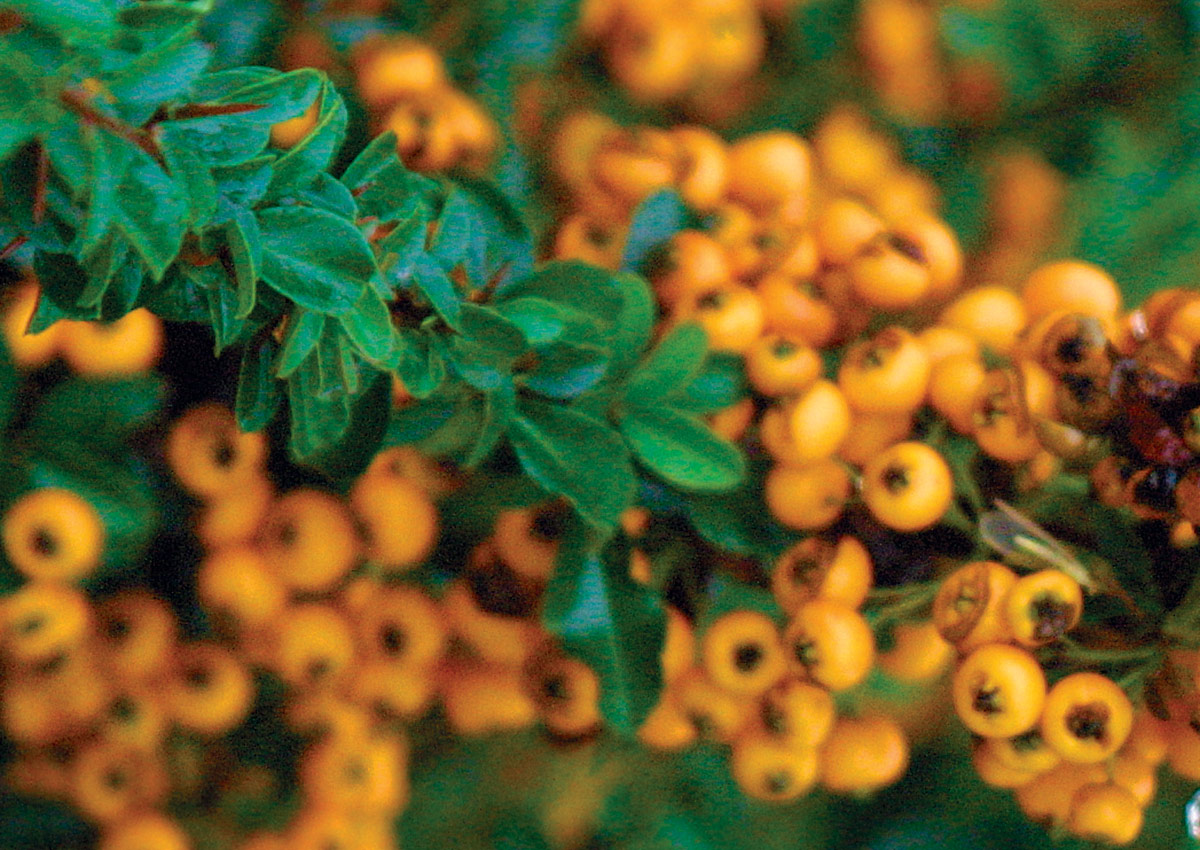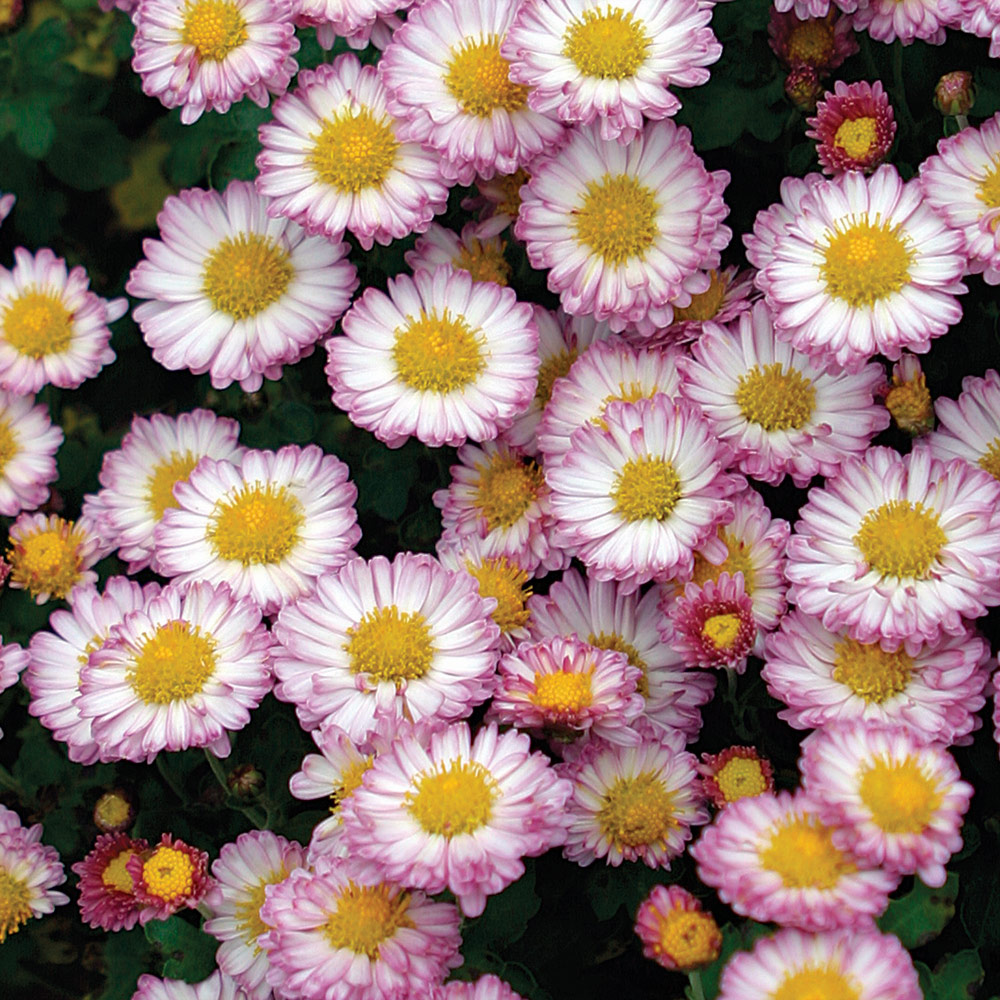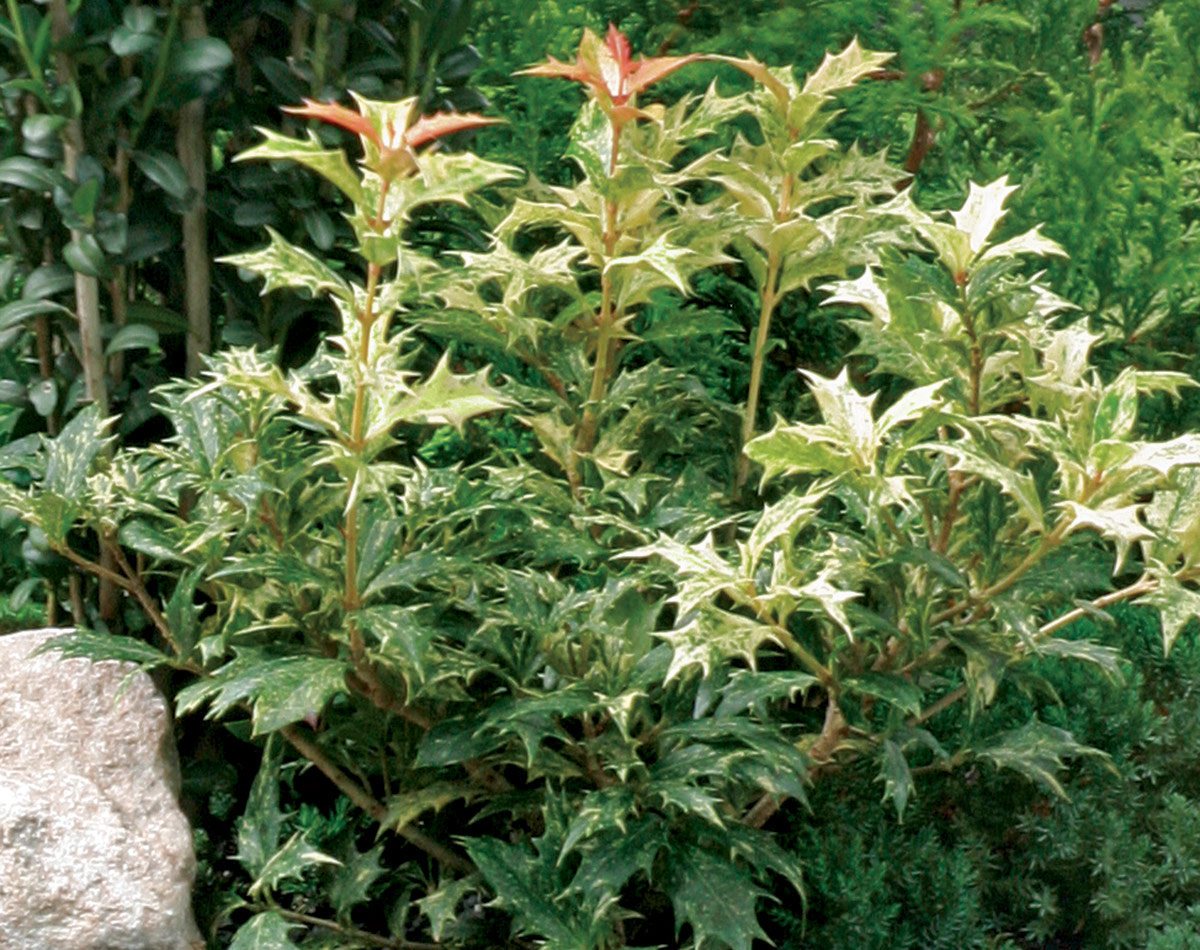Unexpected Container Plants for Fall
Look to these selections if you want persistent foliage appeal

Fall and winter give me the opportunity to start over with my container designs, even though we associate this time with the end of the growing season. My favorite plants at this time of year are those with stubborn, persistent foliage appeal. Frostproof, wind-resistant perennials and shrubs steadily replace tender plants as the season progresses.
Plectranthus
Name: Plectranthus spp. and cvs.
Zones: 10–11
Conditions: Partial shade
Plectranthus are drought-tolerant, shade-loving staples for container gardening. Some are engineered for sun and others for shade, but their late-season blooms put on a memorable show no matter where they go.
Firethorns

Name: Pyracantha spp. and cvs.
Zones: 6–9
Conditions: Full sun to partial shade
Many shrubs yield beautiful fruit and berries that are a cinch to decorate with and a riot to watch when wildlife moves in for the harvest. Fluttering birds put on a real show as they clean the fruit right off the branches of this shrub.
Ornamental peppers
Name: Capsicum annuum cvs.
Zones: Annual
Conditions: Full sun
Ornamental peppers start producing fruit early in the season but come into their prime late in the season. They are indispensable for fall containers, adding both color and form.
‘Northwind’ switchgrass
Name: Panicum virgatum ‘Northwind’
Zones: 5–9
Conditions: Full sun
With its strong, rigid form, ‘Northwind’ stands up to wind and does not flop, unlike other switchgrasses. Its green foliage turns to gold in fall and creates a wonderful, colorful backdrop for combinations.
Violas

Name: Viola spp. and cvs.
Zones: 3–11
Conditions: Full sun to partial shade
Violas have become more popular than pansies for fall and winter containers because they are less sensitive to day length, which, as the days grow shorter, makes them more consistent bloomers. Violas do not need streetlights or other supplemental light to continue blooming throughout fall and winter. The petals of a viola are smaller than those of a standard pansy, but check the plant tag to be certain you have the right plant before you make a purchase.
Orange hair sedge
Name: Carex testacea
Zones: 8–9
Conditions: Full sun to partial shade
Few plants rate as high as orange hair sedge for year-round appeal, especially in the South. Its evergreen qualities, combined with its ability to define and complement the foliage texture of other plants, make it indispensable.
Heirloom mums

Name: Chrysanthemum spp. and cvs., and Dendranthema spp. and cvs.
Zones: 5–9
Conditions: Full sun to partial shade
Standard garden mums, with their tight, symmetrical, rounded forms, are not the creatures I used to know. My grandmother grew varieties I can’t find anymore, but the Chinese, Japanese, Korean, and Oriental types my mother and I once grew have now become sturdy perennial staples in my garden. These mums, like C. koreanum ‘Mei-Kyo’ (pictured), are often much bigger than their mini modern counterparts. More of these large perennial mums, some reclassified as Dendranthema on the nursery tag, are being reintroduced into the market and are becoming easier to find, as gardeners realize their potential as cut flowers and true perennials.
Variegated English ivies
Name: Hedera helix* cvs.
Zones: 5–11
Conditions: Full sun to partial shade
The value of variegated ivies, when confined to containers, is immense. They provide a wonderful evergreen quality, and their white or gold variegation only amplifies their appeal.
‘Glauca Pendula’ weeping Atlas cedar

Name: Cedrus atlantica ‘Glauca Pendula’
Zones: 6–9
Conditions: Full sun
The formal ‘Glauca Pendula’ weeping Atlas cedar is an irresistible eyeful and worth the sometimes hefty price it commands. The tree can be trained to take on many forms, from twisted to horizontal. Its shape is made even more appealing by the branches that bow down toward the ground in the same delicate manner as a weeping willow. With conifers, you pay for age as much as the rarity of the specimen, meaning that there are plenty of them available in different sizes and at various prices.
‘Goshiki’ false holly

Name: Osmanthus heterophyllus ‘Goshiki’
Zones: 7–9
Conditions: Full sun to partial shade
‘Goshiki’ false holly is a collector’s dream. Its young leaves have a pink tint that matures to a dark green. One plant alone is enough for a container. When planting single specimens like this, it’s most effective to leave them alone with just a touch of gravel or moss covering the soil and outlining the plant’s form.
Redtwig dogwoods

Name: Cornus alba and cvs., and C. sericea and cvs.
Zones: 2–8
Conditions: Full sun to partial shade
Shrubby dogwoods fit perfectly into a winter theme. Brilliant spikes of flaming color satisfy my taste buds until spring arrives, and I can pair dogwoods with flowers and foliage. As soon as spring rolls around, these beauties like to be cut back sharply to force new growth.
Variegated wintercreepers

Name: Euonymus fortunei* cvs.
Zones: 5–9
Conditions: Full sun to partial shade
Euonymus come in many fine varieties, but I have to say that the dwarf variegated types are my favorites. I find it sad that one of my favorite plants has an insect disease named after it, but with a watchful eye, you can easily ward off euonymus scale.
‘Evergold’ sedge
Name: Carex oshimensis ‘Evergold’
Zones: 6–9
Conditions: Full sun to partial shade
Few leafy plants perform in winter as well as ‘Evergold’ sedge. It is extremely hardy and lives for years in containers. The foliage continues to grow to unbelievable lengths, creating a cascading effect in potted mixes.
‘Angelina’ sedum

Name: Sedum rupestre ‘Angelina’
Zones: 6–9
Conditions: Full sun
This sedum tops the list of my favorite hardy succulents because its summer cloak of chartreuse foliage turns a luscious, brilliant, coppery orange in winter. Its juicy leaves cascade out of pots and baskets, and it makes a welcome companion plant at a time when choices may be few and far between.
Creeping raspberry
Name: Rubus pentalobus
Zones: 7–9
Conditions: Full sun to partial shade
Creeping raspberry is useful as an evergreen ground cover. Its foliage turns a deep burgundy in the colder months, adding a variation to mostly green arrangements. Thick, hairy, and slightly rough to the touch, creeping raspberry is strong enough to compete with conifers and other woody plants yet refined enough to combine with tender plants or perennials during the rest of the year.
‘Citronelle’ heuchera

Name: Heuchera villosa ‘Citronelle’
Zones: 4–9
Conditions: Full sun to partial shade
Lime green is a daydreamy, whimsical color that can’t be resisted. Even in winter, ‘Citronelle’ heuchera maintains its striking chartreuse color. Its dense foliage fills out even more during brief breaks in frigid weather. As a thick filler, ‘Citronelle’ gives my containers visual appeal all year long.
*Invasive alert: Variegated english ivies (Hedera helix) and variegated wintercreepers (Euonymus fortunei)
Please visit invasiveplantatlas.org for more information.
Photos, except where noted: Michelle Gervais













Comments
Log in or create an account to post a comment.
Sign up Log in